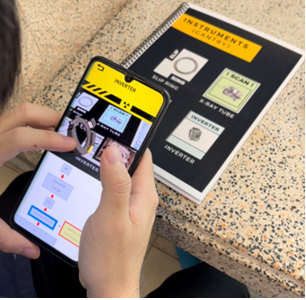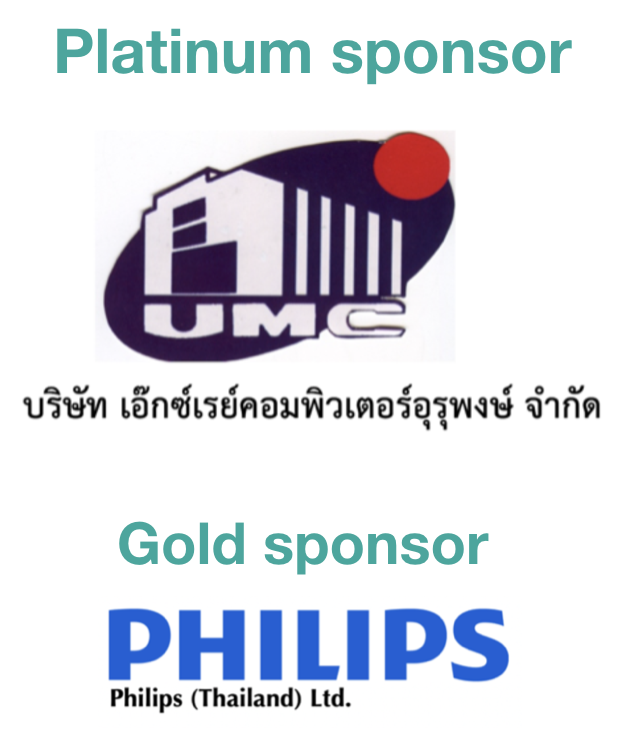The development of 3D interactive learning media using augmented reality technology: basic principles and instruments of dual-energy computed tomography
Keywords:
Augmented reality, 3D interactive learning media, Dual energy computed tomographyAbstract
The purpose of this research is to create a three-dimensional interactive learning material using augmented reality technology to educate students about the basic principles and instruments of dual energy computed tomography. The material will be built using the Unity 3D application. A special random sample procedure was utilized to choose 28 students in the second year of Radiological Technology studies at the Faculty of Medicine Prince of Songkla University. The findings revealed that the mean Content Validity Index score is 0.97, the Technology Acceptance Model score level has a mean and standard deviation of 4.67 ± 0.57, and the content and media appropriateness score level with a mean and standard deviation of 4.67 ± 0.55 all met preset requirements and were approved by three experts. At the 0.05 significant level, the students' achievement score after using the application level with a mean and standard deviation of 17.68 ± 1.83 was higher than before using it 8.50 ± 2.72, the students' satisfaction with the learning media score level with a mean and standard deviation of 4.58 ± 0.76 and the Technology Acceptance Model score level with a mean and standard deviation of 4.78 ± 0.44. In conclusion, the development of this education tool can support learners in visualizing information in three dimensions and in better understanding the fundamental concepts and equipment of dual energy computed tomography.
Downloads
References
Akçayır, Murat, et al. “Augmented reality in science laboratories: The effects of augmented reality on university students’ laboratory skills and attitudes toward science laboratories.” Computers in Human Behavior 57 (2016): 334-342.
Ibáñez, María Blanca, et al. “Experimenting with electromagnetism using augmented reality: Impact on flow student experience and educational effectiveness.” Computers & Education 71 (2014): 1-13.
พรวิภา นาบํารุง. “การพัฒนาสื่อการเรียนรู้ด้วยเทคโนโลยีความจริงเสมือนเรื่องการสร้างนิทานโดย โปรแกรม Scratch ร่วมกับการพัฒนาทักษะการคิดสร้างสรรค์โดยใช้กระบวนการจัดการเรียนรู้แบบสร้าง องค์ความรู้สําหรับนักเรียนชั้นมัธยมศึกษาปีที่ 1 โรงเรียนโคกก่อ พิทยาคม อําเภอเมือง จังหวัด มหาสารคาม องค์การ บริหาร ส่วน จังหวัด มหาสารคาม.” วารสารศึกษาศาสตร์ ปริทัศน์ 35.1 (2020): 57-63.
Kim, Sung Lae, et al. “Using Unity 3D to facilitate mobile augmented reality game development.” 2014 IEEE World Forum on Internet of Things (WF-IoT). IEEE, 2014.
AR development in Unity. 2019. Available from: https://docs.unity3d.com/Manual/index.html
Grahn, Ivar. “The uforia sdk and unity3d game engine: Evaluating performance on android devices.” (2017).
Vuforia Engine : https://library.vuforia.com/articles/Training/getting-started-with-vuforia-in-unity.html
อุไรวรรณ ชัยชนะวิโรจน์และ ชญาภา วันทุม. การทดสอบความตรงตามเนื้อหาของเครื่องมือวิจัย Evaluation of Content Validity for Research Instrument. วารสารการพยาบาลและสุขภาพ 2560;2:105-11.
Tella, Adeyinka, and Gbola Olasina. “Predicting users’ continuance intention toward e-payment system: An extension of the technology acceptance model.” International Journal of Information Systems and Social Change (IJISSC) 5.1 (2014): 47-67.
Nuanmeesri S. The Augmented Reality for Teaching Thai Students about the Human Heart. International Journal of Emerging Technologies in Learning (iJET) 2018;6:203-213.
พรทิพย์ ปริยวาทิต, and วิชัย นภา พงศ์. "ผลของการใช้ บทเรียน Augmented Reality Code เรื่องคำ ศัพท์ภาษาจีนพื้นฐานสำหรับนักเรียนชั้นประถมศึกษาปีที่ 3 โรงเรียนเทศบาล ๒ วัด ตานีนร สโมสร." วารสาร วิทย บริการ มหาวิทยาลัย สงขลานครินทร์. Academic Services Journal, Prince of Songkla University 27.1 (2016): 9-17.

Downloads
Published
How to Cite
Issue
Section
License
Copyright (c) 2022 The Thai Society of Radiological Technologists

This work is licensed under a Creative Commons Attribution-NonCommercial-NoDerivatives 4.0 International License.
บทความที่ได้รับการตีพิมพ์เป็นลิขสิทธิ์ของสมาคมรังสีเทคนิคแห่งประเทศไทย (The Thai Society of Radiological Technologists)
ข้อความที่ปรากฏในบทความแต่ละเรื่องในวารสารวิชาการเล่มนี้เป็นความคิดเห็นส่วนตัวของผู้เขียนแต่ละท่านไม่เกี่ยวข้องกับสมาคมรังสีเทคนิคแห่งประเทศไทยและบุคคลากรท่านอื่น ๆในสมาคม ฯ แต่อย่างใด ความรับผิดชอบองค์ประกอบทั้งหมดของบทความแต่ละเรื่องเป็นของผู้เขียนแต่ละท่าน หากมีความผิดพลาดใดๆ ผู้เขียนแต่ละท่านจะรับผิดชอบบทความของตนเองแต่ผู้เดียว




